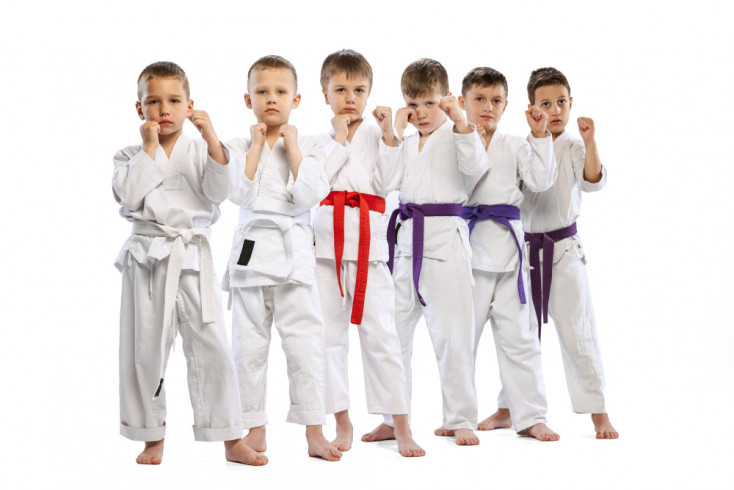Karate Belt Levels In Order

Introduction
Karate, a martial art steeped in tradition and history, has evolved over time to incorporate a modern belt ranking system. While the roots of Karate are ancient, the kyu/dan grading system, inspired by Judo, has been instrumental in measuring practitioners' progress since the early 20th century. Contrary to popular belief, achieving a black belt is not the culmination of one's journey but rather a significant milestone along the path of continuous improvement.
Understanding Different Karate Styles and Ranking Systems

The world of Karate is diverse, with various styles, schools, and countries adopting their unique belt colors and ranking systems. While the core principles of Karate remain consistent, belt colors can vary widely. The most common belt colors include white, yellow, orange, green, turquoise, blue, brown, and black. Four main styles of Karate exist, each characterized by its own techniques, practices, and philosophies. Despite these differences, all styles use some form of belt system to gauge progress and skill.
Levels of Kyu (Student Levels)

Kyu rankings play a crucial role in Karate and other Japanese martial arts. These rankings indicate a student's proficiency and development in the art. The term "Mudansha" is used to refer to practitioners who have not yet achieved a black belt. Karateka advance through the kyu grades sequentially, with 1st Kyu (brown belt) representing the most advanced "student" level. As practitioners progress, they gain a deeper understanding of Karate's techniques and principles.
The Karate Belt Order
:max_bytes(150000):strip_icc()/karate_martial_arts_137867517-56a5ffd63df78cf7728ad4ca.jpg)
The Karate belt order follows a specific color progression, each representing a stage of a practitioner's journey:
-
White Belt (6th Kyu): The white belt signifies the beginning of one's Karate journey. At this stage, new students are like blank slates, eager to learn and grow.
-
Yellow Belt (5th Kyu): The yellow belt is earned by passing a test, signifying the learner's grasp of fundamental Karate concepts.
-
Orange Belt (4th Kyu): At the orange belt level, students begin to master the basics, gaining a deeper understanding of Karate principles.
-
Green Belt (3rd Kyu): Green belt holders focus on honing their skills, improving self-defense techniques, and understanding their opponents.
-
Blue Belt (2nd Kyu): Students at the blue belt level demonstrate increased mastery of their skills, both mentally and physically. They gain better control in sparring and become more self-assured in their abilities.
-
Brown Belt (1st Kyu): The brown belt represents the highest student level in the Karate hierarchy. At this stage, practitioners have mastered the mechanical execution of Karate techniques and are proficient in using them effectively in combat situations.
The Journey Continues: Dan Ranks

The journey doesn't conclude with a brown belt; in fact, it marks the beginning of the dan ranks, which denote advanced levels of mastery. The title "Yudansha" is bestowed upon those who have achieved dan ranks. The progression from Shodan (1st Dan) to the highest ranks reflects a practitioner's continuous growth, both in skill and understanding:
-
Shodan (1st Dan): A practitioner who has mastered the fundamentals of Karate.
-
Nidan (2nd Dan): An expert karateka who has achieved a high level of proficiency.
-
Sandan (3rd Dan): One who has not only learned the fundamentals but is also skilled in the art of Karate.
-
Yondan (4th Dan): A practitioner who has mastered both the basics and the practical applications of Karate.
-
Godan (5th Dan): An exceptional martial artist who demonstrates mastery in both fundamentals and practical applications.
-
Rokudan (6th Dan): A true master who has delved deep into the essence of Karate.
-
Nanadan (7th Dan): An expert Karate practitioner who has attained a profound understanding of the art's deeper meaning.
-
Hachidan (8th Dan): An exceptionally proficient Karateka with years of dedicated practice and expertise.
-
Kyudan (9th Dan) and Judan (10th Dan): These honorary titles are reserved for the most deserving masters.
The Evolution of Belt Colors in Karate

The modern Karate belt system, which includes various colors, was introduced by Mikinosuke Kawaishi in 1935 when he began teaching Judo in Paris. This innovation aimed to provide students with a visible and rewarding progression system. While belt colors vary from school to school and organization to organization, the concept of recognizing accomplishments through belt colors has become integral to Karate's grading system.
Conclusion
The Karate belt ranking system, from the beginner's white belt to the revered black belt and beyond, symbolizes the continuous journey of growth and mastery. It is not merely a measure of physical prowess but also an acknowledgment of the mental and spiritual development that accompanies the martial arts journey. As Karate practitioners progress through the ranks, they embody the principles of discipline, respect, and perseverance that define this ancient art.



